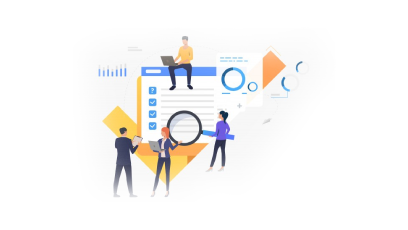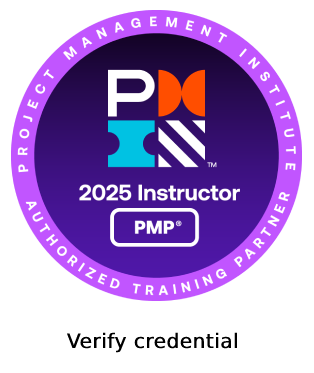Course Description
This Agile Management Fundamentals Workshop provides detailed information about the Agile (Scrum and XP) methodologies as related to project management. The course provides information regarding the evolution of Agile methodologies, the unique benefits provided by Agile methodologies and challenges/best practices in adopting Agile/Scrum methodology in an organization. This course also introduces participants to the core concepts of Scrum/XP and how it can be effectively applied in work environments. Participants of this course will grasp the concepts, principles and methods of Agile development and get a fast start towards executing their plans for incorporating Agile practices and techniques into their organizations. This workshop will give participants the foundation of knowledge they need to begin. It is a starting point for participants to acquire the techniques, skills and tools that enable you to build Agile discipline. Participants will also gain an understanding of the collaboration and communication needed between customer and developers for Agile to succeed.
In addition to defining Agile principles, the course takes participants through the process of conducting a feasibility assessment of a particular product/project, initiating an Agile Project by developing a high-level product roadmap, then performing release planning followed by sprint planning and sprint execution (Agile ceremonies).
Course Downloads

Passing PMP exam is similar to finishing Marathon. Must plan well with strong intention. Must practice, practice often and practice a lot. Project Victor course + material is a very good tool to make it done. I practiced 2,700 questions from Petros’s and then (…)
Select and Register for Agile Delivery Management Workshop

Key Features of Agile Delivery Management Workshop
Delivery Method
Instructor led, group-paced, classroom-delivery learning model with structured hands-on activities.
Prerequisites
- No pre-requisites required.
Course Duration
- 2 Days (equivalent to 14 Contact Hours or Professional Development Units – PDUs)
- Project Victor’s Designed Course Material
- Project Victor Course completion certification
- 2-Days at a reputable hotel that includes 2 coffee breaks and International Buffet lunch
- PMI® Contact Hours: Each Contact Hour is 1 PDU (Total of 14 Contact Hours/PDUs for full course)
- Project Victor Project Management Training
- Pens, Pencils, Markers, Eraser
- President of PMI Thailand Chapter for 13 years (2011-2023);
- Currently Past President and Chapter Counselor.

- He is a Certified Program Management Professional (PgMP®) (Project Management Institute – www.pmi.org); Certificate # 2079271.
- He is a Certified Project Management Professional (PMP/CAPM®) (Project Management Institute – www.pmi.org); Certificate #1258917
- He is an Agile Certified Practitioner (PMI-ACP®) (Project Management Institute – www.pmi.org); Certificate #2600926
- He is a Certified Scrum Master (CSM®) (Scrum Alliance – www.scrumalliance.org); Certificant ID: 001062861
- He is a SAFe Program Consultant (SPC)® 6.0; Certificate ID: 50804412-3031
- He is a SAFe Agilist® 6.0 (www.scaledagile.com); Certificate ID: 23353981-8934
- He is Certified Risk Management Professional (RMP®) (Project Management Institute – www.pmi.org); Certificate #2033120
- He was Vice President at one of the largest Thai Systems Integrator public company for more than 10 years.
- He has experience managing and leading mega-projects (Information Technology, Airport-related, CCTV-related, Transport-related, and Power Infrastructure) in various industries.
- He is a commercial contract manager, reviewer, and advisor.
- He teaches part-time at King Mongkut University of Technology (Thonburi) – Graduate School of Management and Innovation (Master Degree in Project Management). He is an invited lecturer to Chulalongkorn University.
- He holds a Doctorate degree obtained from Assumption University of Thailand with an international record of publications in refereed journals with a special concentration on business management.
- He has trained more than 5000 program/project managers, project engineers, project coordinators, and project team members since 2010.
- He has helped certify more than 800 Project Management Professionals (PMP/CAPM) in Thailand.
- He is also a highly experienced speaker and trainer who is also passionate about Project Management.
Detailed Course Syllabus
Course Objectives
Participants will be able:
- To prepare the participants for successful adoption of Agile/Scrum methodologies.
- To Learn World’s Best Agile practices and understand why Agile methodologies are gaining wider adoption.
- To understand the challenges and best practices in Agile implementation.
Target Audience
- Team Leads and Team Members
- Project Managers
- Project Leaders
- Managers (Directors, General Managers)
- Anyone interested in learning how to adopt Agile Frameworks and Practices
- Professionals interested in applying for the PMI-ACP Exam
Course Content
In addition to defining Agile principles, the course takes participants through the process of conducting a feasibility assessment of a particular product/project, initiating an Agile Project by developing a high-level product roadmap, then performing release planning followed by sprint planning and sprint execution (Agile ceremonies).
- Module 1: Introduction and Agile Management Concepts Understand the Agile Value Proposition Agile as a Project Management Framework Discussion of the Agile Values and Principles Agile Approaches versus Waterfall Approaches Difference between a Project and a Product
- Module 2: Agile Life Cycles and Agile Team Roles Introduction to the Agile Inverted Triangle Introduction to Agile Lifecycles Common Agile Methodologies Relationship between Lean, Kanban, and Agile methods Exclusive vs. Inclusive Tools in Agile Introduction to Scrum Framework Introduction to XP Framework Agile Team Structure and the Roles and responsibilities
- Module 3: Project Feasibility and Assessment Value-driven Delivery Establishing the Business Case Project/Product Visioning Product Visioning
- Module 4: Initiating an Agile Project How to Initiate an Agile Project Purpose of preparing an Agile Charter Components of an Agile Project Charter Developing a Team Charter (optional) Identify and Analyze Stakeholders (optional) High-level Planning and Developing a Product Backlog
- High-level estimating using Affinity Estimates High-level estimating using T-shirt sizes Developing a Product Roadmap
- Module 5: Release Planning Slice the epics/features/stories that will be done in the upcoming release into pieces of work that are small enough to be completed within one iteration. As we slice the epics/features/stories, we will map out a rough outline of how the release will be accomplished and how many iterations will be needed. Have a shared understanding of the release goal at the end of the meeting. A list of the stories to be done in the upcoming release, sliced into manageable chunks. A roadmap for completing those stories (i.e., a plan for what we will accomplish in each iteration). Prepare a rough outline of what will be done in the future releases.
- Module 6: Iteration Planning and Delivery How to perform Iteration Planning Differentiate between types of Iterations Events or Agile Ceremonies involved in Sprint Execution Identify acceptance tests for stories Stages of Team Development Building and Developing Agile Teams
- Module 7: Closing an Agile Project Determine the activities involved in closing the project and obtaining formal acceptance from the customer. Determine activities involved in closing procurements. Distinguish between closing a project, phase, and a procurement.
We’ve Trained Professionals
across Global Companies













































Need more information on Trainings?
We’re a click away
Free Shipping
Free Shipping for orders over £130
Money Guarantee
Within 40 days for an exchange.
Flexible Payment
Pay with Multiple Credit Cards
Online Support
24 hours a day, 7 days a week
Don't compromise on quality!
Subscribe to the newsletter
- TEL : 0980 444 45 456
- MAIL : hello@demo.com
Don't compromise on quality!
- TEL : 0980 444 45 456
- MAIL : hello@demo.com
About Wooma
Help
Categories
Campaigns
Company
Resources
Contact Details
-
200/05, Narathiwat Ratchanakarin Road,
Chongnonsi Yannawa, Bangkok 10120 - info@projectvictor.com
- (66) 92 348 4772
- (66) 02 294 2492
Copyright © 2025. Project Victor Co., Ltd. All Rights Reserved.
- Call us on (66) 92 348 4772
“PMI,” “PMP,” “CAPM,” “PMI-ACP,” “PMBOK,” and the PMI Authorized Training Partner logo are registered marks of the Project Management Institute, Inc.
“ITIL®,” “PRINCE2®,” “MSP®,” and “P3O®” are registered trademarks of AXELOS Limited, used under permission of AXELOS Limited. View Disclaimer




